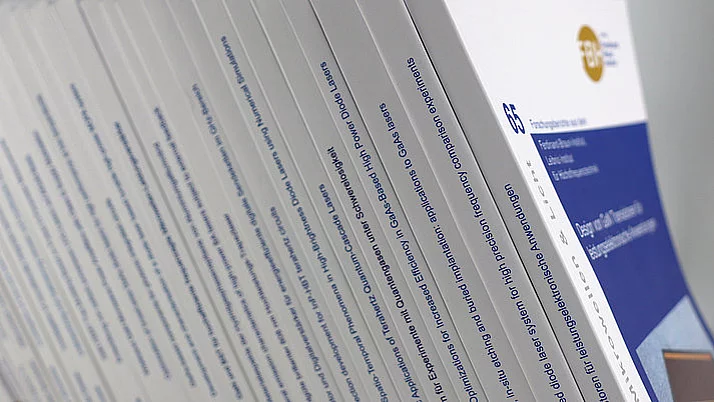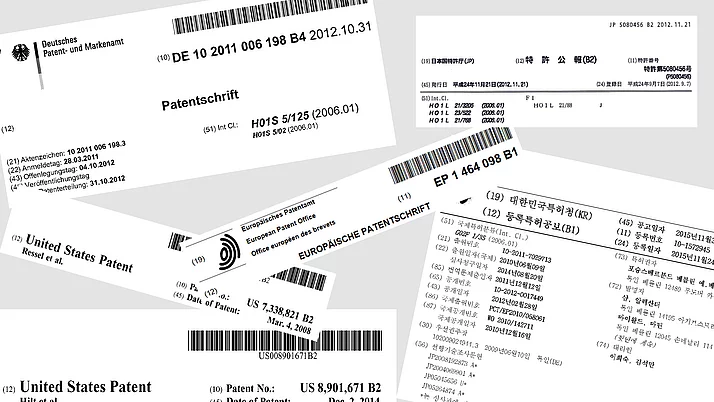Advances towards deep-UV light emitting diode technologies
M. Kneissl1,2, G. Cardinali1, J. Enslin1, M. Guttmann1, C. Kuhn1, F. Mehnke1, M. Schilling1, L. Sulmoni1, N. Susilo1, T. Wernicke2, H.K. Cho2, J. Glaab2, J. Ruschel2, S. Hagedorn2, N. Lobo-Ploch2, C. Netzel2, J. Rass2, S. Walde2, U. Winterwerber2, S. Einfeldt2, M. Weyers2
Published in:
Conf. on Lasers and Electro-Optics/Europe and European Quantum Electronics Conf. (CLEO/Europe-EQEC 2021), Munich, Germany, Jun. 21-25, virtual event, ISBN: 978-1-6654-1876-8, cb-7-1 (2021).
Abstract:
Driven by a wide range of applications, as shown in Fig. 1(a) , the development of AlGaN-based light emitting diodes in the deep ultraviolet spectral range (DUV-LEDs) has greatly intensified. In contrast to conventional ultraviolet sources UV-LEDs exhibit small form factors, operate at moderate dc voltages, show long lifetimes, and their emission covers the entire UVB and large parts of the UVC wavelength range. Currently, the main driving force are high volume applications like water purification, disinfection of surfaces and appliances, inactivation of germs in air treatment systems as well as sterilization of medical equipment with a focus on UVC-LEDs emitting near the germicidal effectiveness peak around 270 nm [1] . This presentation will provide an overview of state-of-the art in DUV-LED device technologies and present recent advances in the development of high quality AlGaN materials by metalorganic vapour phase epitaxy (MOVPE). We will discuss different approaches to improve the internal quantum efficiency of UV light emitters, including the growth of low defect density AlN layers on sapphire substrates by epitaxial lateral overgrowth (ELO) as well as sputtered and high temperature annealed AlN on sapphire [2] . We will demonstrate AlGaN quantum well (QW) LEDs with output powers of more than 50 mW for single-chip emitters near 265 nm and explore the wavelength limits of deep UV-LEDs with emission as short as 217 nm. These far UV-LEDs are ideally suited for sensing applications like the monitoring of combustion engines, toxic gases, nitrates in water, and may also be utilized for the in-vivo inactivation of multi-drug-resistant germs or viruses without damaging the human skin.
1 Institute of Solid State Physics, Technische Universität Berlin, 10623 Berlin, Germany
2 Ferdinand-Braun-Institut gGmbH, Leibniz Institut für Höchstfrequenztechnik, 12489 Berlin, Germany
Copyright © IEEE 2021. All rights reserved.
Personal use is permitted, but republication/redistribution requires IEEE permission. See https://www.ieee.org/publications/rights/index.html for more information.
Full version in pdf-format.


